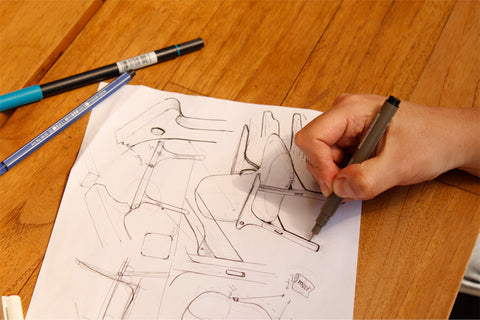
La Juárez has become one of the leading neighborhoods in the cultural and design field in Mexico City. Its history goes back to the Porfiriato, but throughout the 20s, 30s and 40s its construction began.
If we take a brief tour, you will find important points in the city such as Paseo de la Reforma, a monumental avenue that has become the business epicenter of the capital. In the last 20 years, the construction of impressive skyscrapers such as the Torre Mayor and the Torre Bancomer, among others, stands out. At the end of the 1920s, it was designed to have smaller streets and to avoid building large mansions; so it was sought to take advantage of a public space to serve as a walk. From the 40s it began to function as an urban project where they began to open galleries.

There is a myth that Juárez was the colony of elite Porfirian houses, but it is not so true, rather, it was planned as a recreational and leisure space, which is why the layout of the Zona Rosa was also modified. This quadrant of the neighborhood is frequented by the LGBTQ+ community as there is a wide range of spaces such as restaurants, bars and nightclubs. Zona Rosa emerged in the 1960s when it began to be frequented by a group of intellectuals and artists such as Carlos Fuentes, José Luis Cuevas, Julián Bert and Vicente Leñero, among others. Another of the important points in the area is undoubtedly the Glorieta de Insurgentes as an urban node that has undergone many changes in the last 15 years. This public space is home to various users and in which merchants, the dissident Tianguis, spaces dedicated to the arts such as Pilares and the main means of public transport such as the metro and the metrobús coexist.

In Zona Rosa, for example, you will find houses of eclectic modernism with a neoclassical base developed during the Porfiriato. Although later decorations inspired by the Baroque or French style of the 18th century were integrated. In the neighborhood there is also a mixture of Moorish touches and different styles and historicisms of the 19th and 20th centuries. There are also some examples of Californian neocolonial architecture and some modernism houses. There are more than 400 buildings of architectural value with more than 80 years of history.

Currently, you can find venues such as the Wax Museum, the Chocolate Museum and stores such as Momo Room, Carla Fernández, Simple by Trista and other fashion brands that after the quarantine reactivated this cultural perimeter once again. At Nice 72, you find the home of mool. In the showroom you can find new lines such as Milá and Kaban; and the emblematic of the catalog such as Borneo, Bow and Fresh, among others.
You are welcome and welcome to visit our new home by appointment by sending a message to 5541442624 or an email to info@mool.mx





